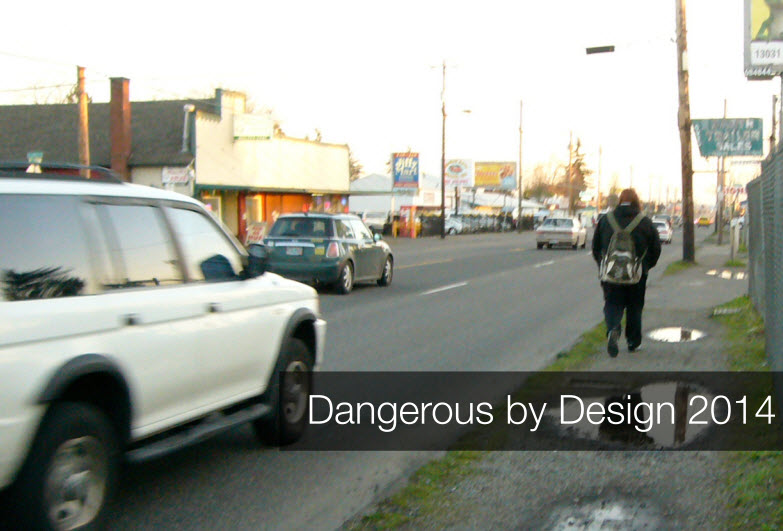AARP Hearing Center
Though older adults most threatened by streets built for speed, not safety

The Boston Metro Region is among the safest in the nation for pedestrians, ranking 51st — the top spot— out of the 51 largest metro areas, according to a new report released today by the National Complete Streets Coalition, a program of Smart Growth America.
While many streets across the country are perilous for people walking, hundreds of communities like Boston, Cambridge and Quincy are working to make their streets safe and welcoming for people on foot. In recent years, scores of communities have begun to redesign roads as “complete streets,” adding sidewalks and bicycle lanes, reducing crossing distances and improving crosswalks. Such design features have helped make walking safe and comfortable for everyone, but there is still much work to do.
“Older persons account for one in every five pedestrian fatalities and have the greatest fatality rate of any population group,” said AARP Executive Vice President Nancy LeaMond. “America’s state, federal and community leaders should focus on making our streets safer — which will benefit everyone, including the growing number of older Americans.”
Though the report found that the Boston region is safer when compared to other metros across the country, 476 pedestrians were killed from 2003 to 2012 — an unacceptable number no matter Boston’s ranking. Continuing to invest resources in making our streets safe for all users is key to ending these preventable deaths.
In addition to ranking America’s major metropolitan areas according to a Pedestrian Danger Index (PDI) to assess how safe pedestrians are while walking, the report, Dangerous by Design (pdf) presents data on pedestrian fatalities and injuries in every U.S. metro area, state, and county. The report also includes an online, interactive map showing the locations where people walking have been fatally struck by the driver of a vehicle.
America’s state, federal and community leaders should focus on making our streets safer — which will benefit everyone, including the growing number of older Americans.” —Nancy LeaMond, AARP Executive Vice President, State and National Group
The majority of pedestrian deaths occur on roadways that are dangerous by design — engineered and operated for speeding traffic with little to no provision for the safety of people walking, biking or using public transit. Sadly, older adults, children and minorities are the most at risk while walking, dying in disproportionate numbers.
From 2003-2010 in Massachusetts, older adults over the age of 65 years old had a 3 percent fatality rate, while older adults over 75 years of age had a 4 percent fatality rate.
Pedestrian safety is often perceived as a strictly local issue but, for decades, federal dollars have been invested in thousands of miles of state and local roads in the heart of communities. In fact, 68 percent of all pedestrian fatalities over the past decade occurred on federal-aid roads — roads that follow federal guidelines and are eligible to receive federal funds.
“We are allowing an epidemic of pedestrian fatalities, brought on by streets designed for speed and not safety, to take nearly 5,000 lives a year; a number that increased six percent between 2011 and 2012,” said Roger Millar, director of the National Complete Streets Coalition. “Not only is that number simply too high, but these deaths are easily prevented through policy, design, and practice. State and local transportation leaders need to prioritize the implementation of Complete Streets policies to improve safety and comfort for people walking.”
The federal government sets the tone for a national approach to safety and Congress can address this critical issue by passing the Safe Streets Act as it renews the transportation law. States are then ultimately responsible for protecting their residents and visitors and reducing the number of people who are killed or seriously injured while walking. State governments and agencies can take a number of actions to improve pedestrian safety, starting with adopting a strong Complete Streets policy and following a comprehensive action plan to ensure the streets are planned and designed for the safety and comfort of people walking.
View the full national report here.
View the Massachusetts-specific report here.
About The National Complete Streets Coalition
The National Complete Streets Coalition, a program of Smart Growth America, seeks to fundamentally transform the look, feel and function of the roads and streets in our community, by changing the way most roads are planned, designed and constructed. Complete Streets policies direct transportation planners and engineers to consistently plan and design streets with all users in mind.
About Smart Growth America
Smart Growth America is the only national organization dedicated to researching, advocating for and leading coalitions to bring better development to more communities nationwide. From providing more sidewalks to ensuring more homes are built near public transportation or that productive farms remain a part of our communities, smart growth helps make sure people across the nation can live in great neighborhoods.































































